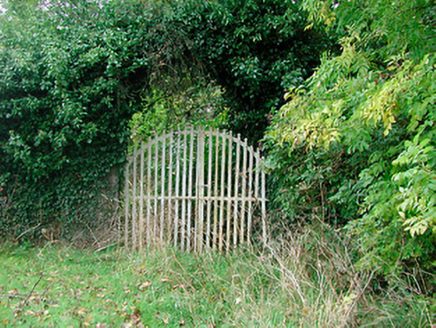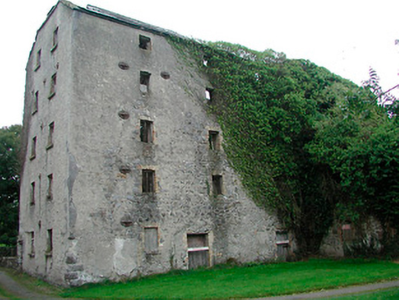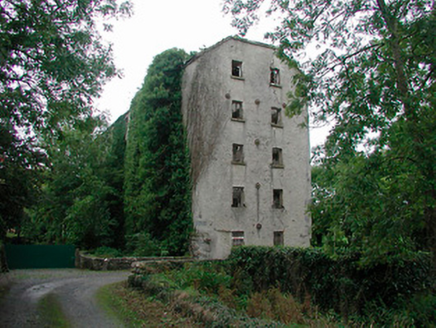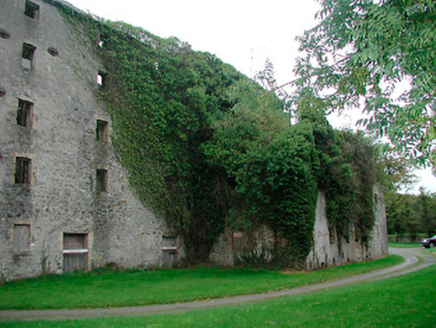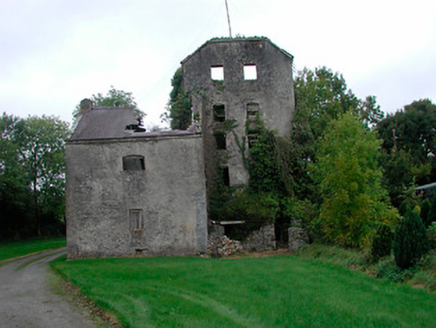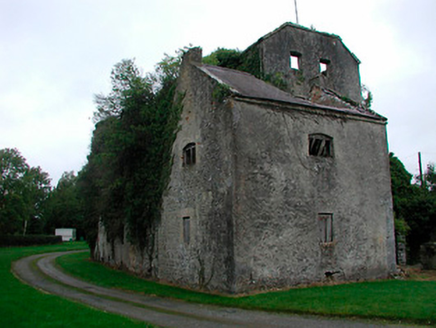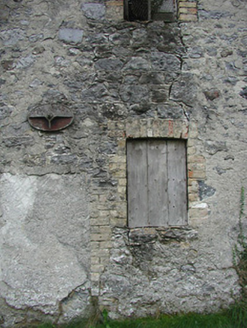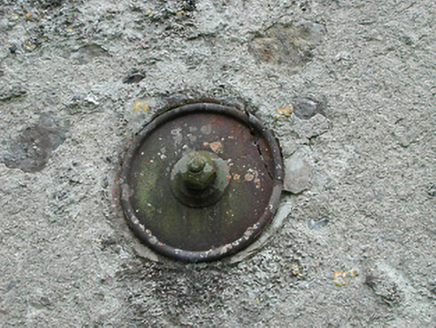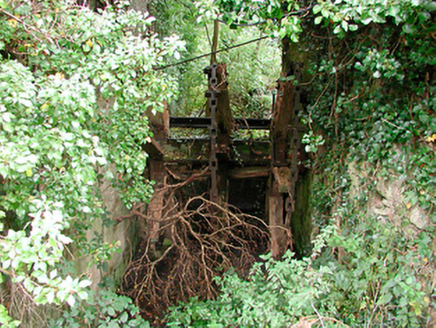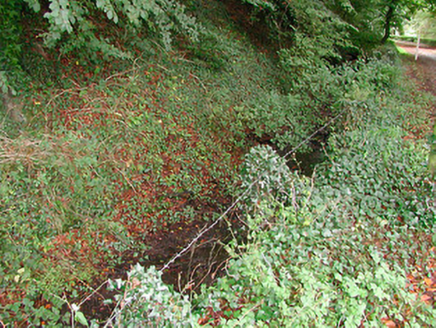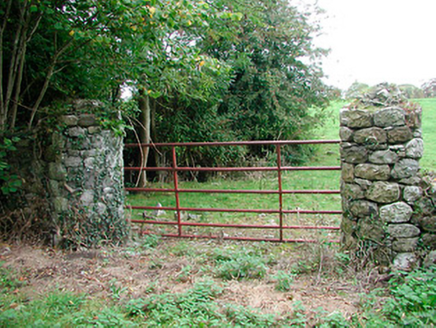Survey Data
Reg No
15319005
Rating
Regional
Categories of Special Interest
Architectural, Historical, Social, Technical
Original Use
Mill (water)
Historical Use
Mill (water)
Date
1760 - 1780
Coordinates
235565, 239417
Date Recorded
27/09/2004
Date Updated
--/--/--
Description
Detached multi-bay five-storey former corn and bleach mill, built c.1770, having a single-bay two-storey block to the southwest corner running perpendicular to the main body of the building. Later in use as a corn and saw mill (1914), now out of use and derelict. Pitched natural slate roofs, partially collapsed to main body of building. Cut stone coping to gable ends of five-storey structure and a projecting brick eaves course and a rendered end chimneystack to the two-storey structure. Surviving sections of cast-iron rainwater goods. Roughcast rendered walls over rubble stone construction with square-headed openings to the five-storey building and shallow segmental-headed openings to the two-storey block. A number of timber sliding sash windows survive to the north end of the five-storey block. Brick dressings to openings to the two-storey block. Square-headed doorways with the remains of timber sheeted doors. Remains of a timber water wheel with iron fittings to the northwest side. Former mill race, now dry, to the west side of the mill. Located on the east bank of the River Brosna and to the southwest of Ballynagore. Mill house (15319006) and outbuildings to the southeast.
Appraisal
The substantial remains of a large-scale former milling complex, which retains its enormous industrial scale and character. This former mill is the largest industrial structure of its date still surviving in Westmeath and is an important part of the industrial heritage of Westmeath and the social history of Ballinagore. It was originally one of a number of mills in Ballynagore, of which this is the only survival. The remains of the former water wheel and the mill race add technical interest and provide an insight into past industrial processes. This mill was originally in use as a flour and bleach mill in the late eighteenth-century. A field to the south was formerly a ‘bleach green’, indicating that it was involved in the processing of flax in the late eighteenth-century, a significant industry in south Westmeath at this time. This mill was in the ownership of the Fleetwood family in the late eighteenth-century and its annual production of flour (and sent to Dublin) increased from 3,158 cwts in 1777 to 6,772 cwts in 1788. It was later in the ownership of a W.H. Mulock, Esq., c.1835, who owned a number of mills in Ballynagore at the time that collectively produced some 40,000 barrels of flour a year and employed a work force of 70. The Murlock family sold their interests to the Perry family in 1838. Adjacent to the mill once stood a gas works, which apparently powered one of the first street lighting projects in Ireland. This mill is a significant survival and its enormous bulk is a feature of some picturesque merit to the south of Ballynagore. The former mill race, the outbuildings and other ancillary structures to site adds to this composition and complete the setting.
